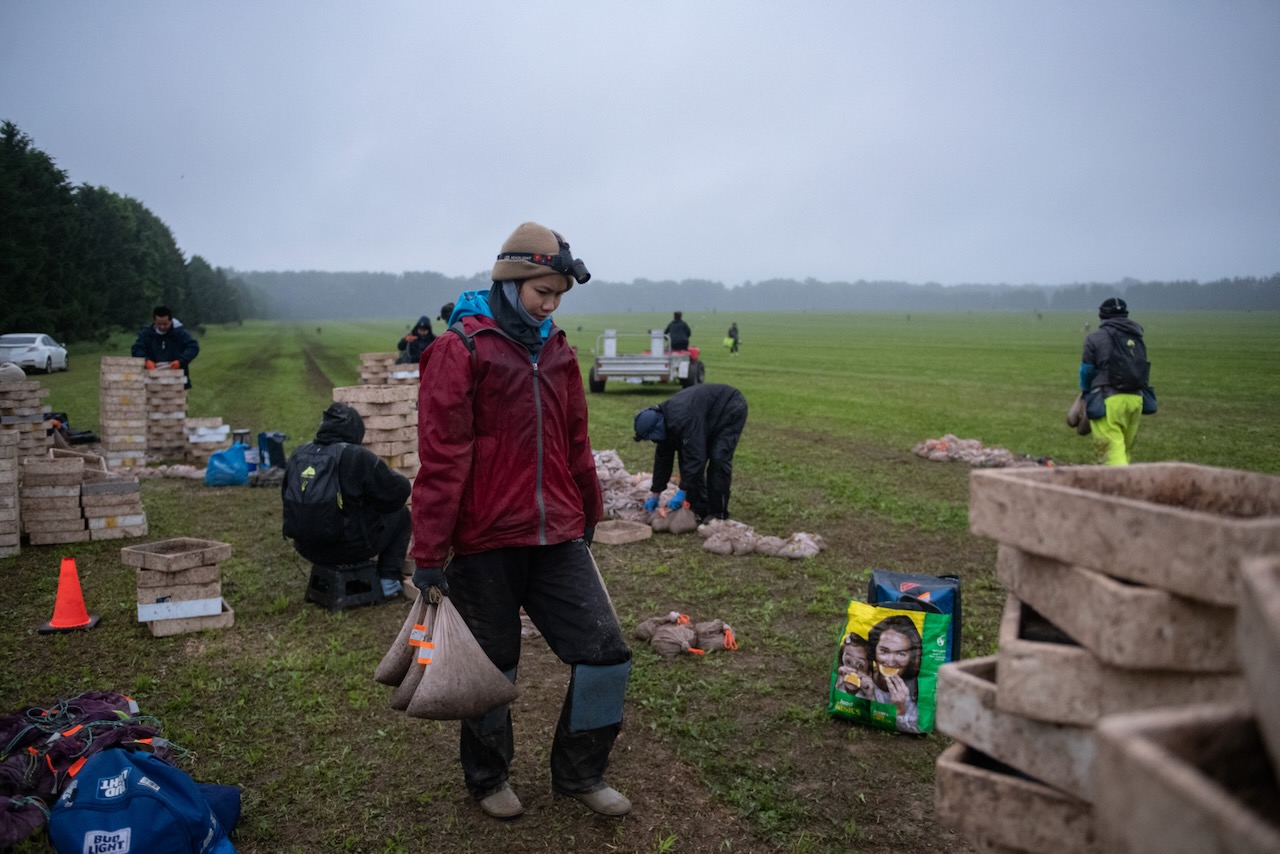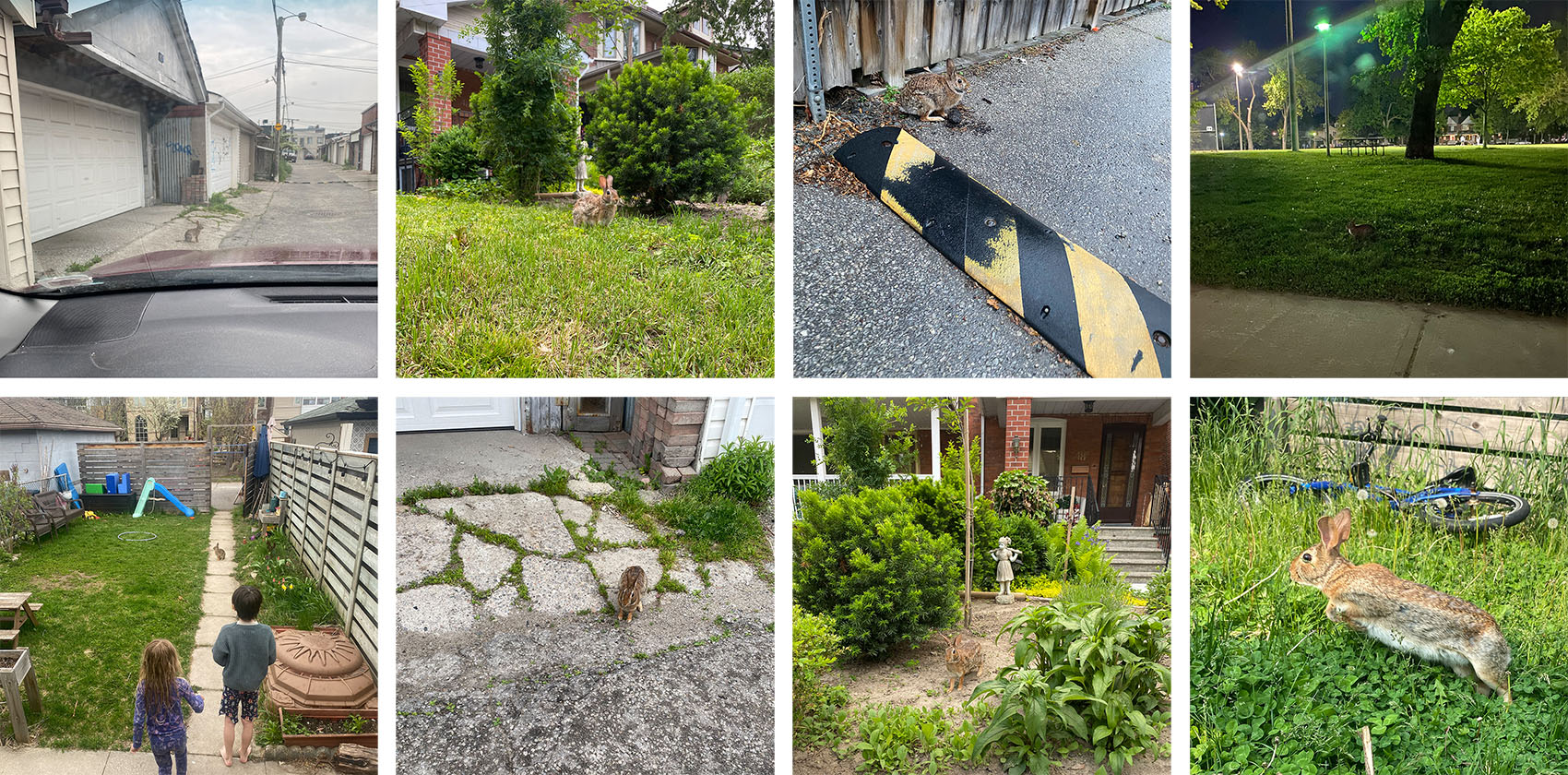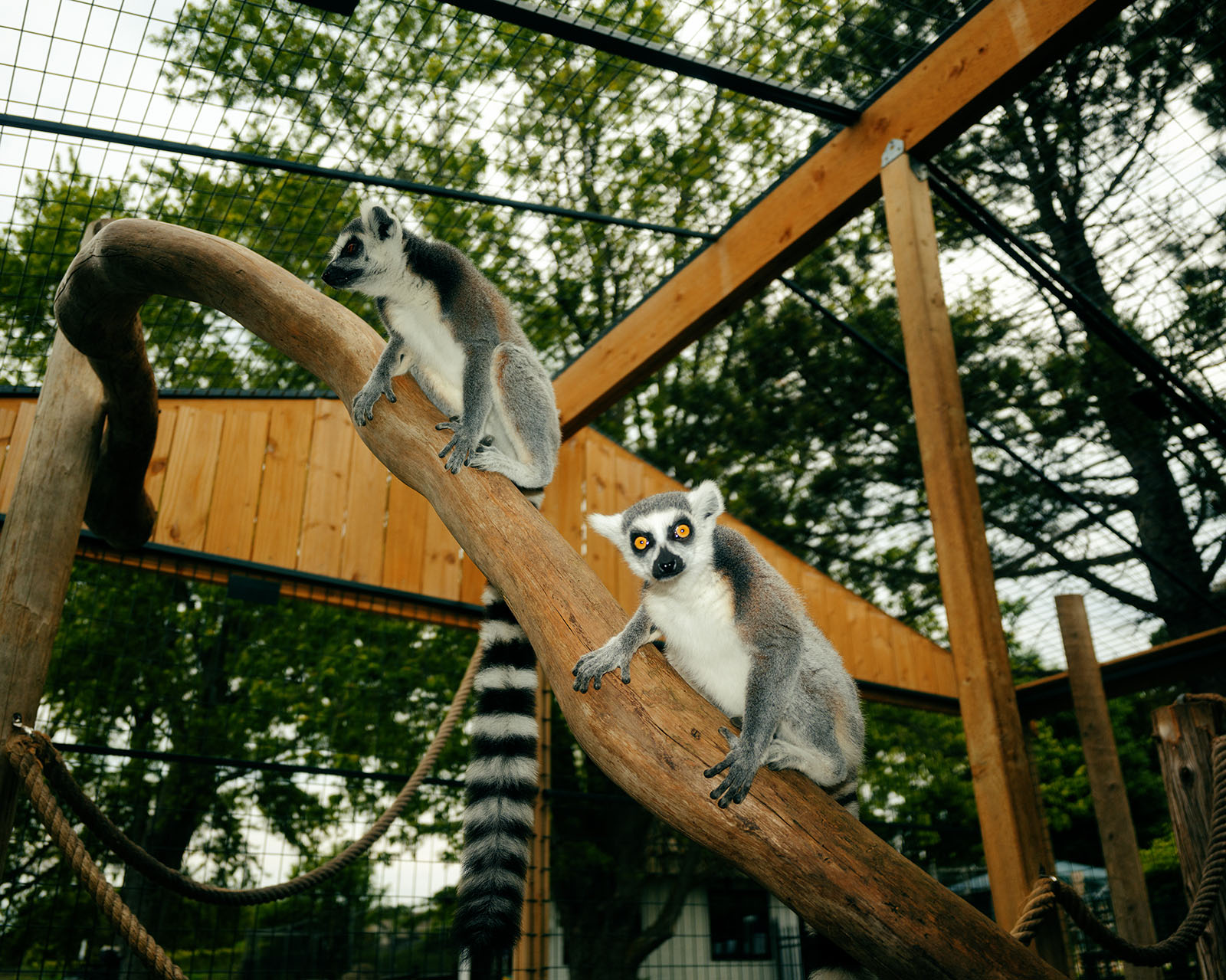

For C., the nightmare started as a head-scratcher. While she was making her 11-year-old son an after-school snack on a Wednesday this past April, she noticed that he was idly raking his nails through his hair. C. (who asked that we not use her full name to protect her family’s privacy and her business) wasn’t particularly fussed, but the gesture was unusual enough that she clocked it. She was brushing her teeth before bed when her son poked his head into the bathroom. “He said, ‘Mom, my head is itchy!”
C, who grew up in northern Ontario and now lives in Toronto, has long harboured a fear of all things bug-related. But a few years ago, she made a conscious decision to try to stop being afraid. “So I’m not anymore,” says C., a dedicated mindfulness practitioner. “But because I’ve always dreaded that this day might come, I had lice kits sitting in a drawer.”
Join the thousands of Torontonians who've signed up for our free newsletter and get award-winning local journalism delivered to your inbox.
"*" indicates required fields

The kits came out; her kid’s head went under the tap. At first, there were no visible signs of an infestation. But after she dried his hair, C. spotted them: lice, speckled across the towel. The bathroom became “Lice Central,” as she puts it, effectively a HAZMAT containment unit where C. assiduously picked through strands; meanwhile, her husband strode through the house tossing bedding into garbage bags as a precaution. Her son wept, worried he’d have to cut off all his long hair. C. tried to reassure him. “But internally, I was like, ‘Oh my god, I think we just should all shave our heads,’” she says. The rest of the night was consumed by frantic shampooing and slathering scalps with over-the-counter treatments; at one point, C., her husband, their son, and their 13-year-old daughter swaddled their heads in Saran wrap to help the stuff sink in.
The family spent the next few days in an endless comb-medicate-wash-check-repeat circuit. Nearly a week (and countless thorough nit scans) after the initial sighting, C. eased up on the regimen. But a couple weeks later, while the family was out for pizza on a Friday night, C. idly glanced at her daughter’s hair, “and I just had this feeling in my stomach,” she says. She did a thorough check once they got home, and lo and behold: the lice had come back. C. resumed the regimen, which she diligently kept up through tears (her own and her kids’) for the next 14 days.

Up to that point, C. says, she’d managed to hive off her personal life from her business as a fitness trainer. Lice is spread through hair-to-hair contact—the pests can’t fly or leap from head to head. But the sense of helplessness—and the worry, unfounded or not, that she might become a vector and infect clients—subsumed her capacity for compartmentalization. “I was like, Oh, fuck. All these people are gonna be like, ‘Why can’t this chick get lice out of her house? Is it at the gym?’” She shut down her gym for a week, stating simply that a family matter had come up that required her attention. While C. felt confident she hadn’t put anyone at risk, she was mortified by the idea of others knowing about what she perceived as a dirty little secret, and worried that it might affect her clients’ willingness to work with her. “But I also couldn’t put it out there because I was feeling so alarmed and embarrassed,” she says. It was a deeply alienating experience, C. says, though she recognizes the inherent irony: she was very much not alone.
Head lice, or Pediculus humanus capitis, is a developmental rite of passage. Those of us who are now old enough to have our own elementary school-aged kids may remember squirming under the watchful eyes of our peers as a public health nurse combed through our hair, praying she didn’t spot a rogue nit. Today, those regular checks no longer happen as a matter of course, but that doesn’t mean the bugs have been banished—ask any parent who’s gone numb upon receipt of a formal notice from daycare, or school, or camp.
That reflexive panic is understandable. As C. can attest, contending with head lice is, at best, a major nuisance with the potential to derail one’s life (albeit temporarily). But as sickening as the experience might be, the itchy pests don’t actually make us sick, which has ramifications. The Canadian Paediatric Society’s official position (developed in 2008 and updated several times since) is that head lice are “not a primary health hazard or a vector for disease, but they are a societal problem with substantial costs.”
The issue with a societal problem is that nobody wants to be accountable for dealing with it—or even documenting its existence. Indeed, Toronto Public Health (TPH) responded to my queries with an emailed statement that it “does not collect data on reports of head lice, as they are not listed as a communicable disease under Ontario’s Health Protection and Promotion Act” and, as a result, there “is no requirement/mandate for public health units to address head lice infestations.” When I reached out to Public Health Ontario’s medical and veterinary entomology department (which includes specialists in zoonotic diseases), a media rep suggested I contact “a local public health unit like Toronto Public Health.” My contact at TPH shared a link to the SickKids headlice explainer and a bullet-point list of tips such as encouraging children not to share hats or headphones, vacuuming, and using “individual well-spaced coat hooks or lockers.”
That advice might have been useful back when Millennials were trying to avoid catching cooties, but it seems somewhat absurd in the context of classrooms packed to the gills with students. Similarly, the treatments that might have worked on ‘90s-era nits—mostly topical insecticides from the drugstore like Nix—are no longer effective on their 2025 counterparts, as C. discovered. These tenacious new Pediculus specimens are seemingly unkillable, somewhat stealthy, and quick to proliferate, which is why they’ve come to be known as super-lice.
If you’ve not encountered them in the flesh (or embedded in family members’ follicles), it may be tempting to dismiss super-lice as a sensationalist effort to capitalize on the fears of neurotic parents. That’s not the case, says Jean-Paul Paluzzi, an associate professor in the biology department at York University who specializes in insect molecular physiology. As he notes, there’s a robust (and growing) body of evidence to suggest that this issue is a legitimate concern.
Similar to antimicrobial resistance—a looming global threat—the waning efficacy of lice treatments that used to be a slam-dunk is an example of evolution in action. Specifically, lice that can withstand topical treatments such as Nix, Pronto, and Rid carry a genetic mutation that makes them less susceptible to permethrin (a pesticide used in many conventional lice treatments) and other members of the pyrethrin insecticide family. Paluzzi notes that this phenomenon extends well beyond the boundaries of the GTA, citing several studies conducted over the past few decades. One 2010 survey of lice from cities in Ontario, Quebec, and B.C. found insecticide-resistant mutations in more than 97 percent of the bugs tested; a more recent meta-analysis revealed that lice in Australia, England, Turkey, and Israel had “100 percent resistant gene frequencies.”
Given that the drugs don’t work, the only viable debugging option is mechanical removal and surveillance—that is, adopting a primate’s steely rigour and using a literal fine-toothed comb to tease out both the lice and their future offspring. The first step is extricating the big bugs, which are easiest to spot. The eggs are trickier—they’re whitish-yellow, tear-shaped, and a couple millimetres long, like tiny sesame seeds, and can easily be confused with dandruff. They hatch in seven to 10 days, and then it takes another seven to 10 days for those newly hatched babies to reach maturity, which is why a regimen involves more than a one-time treatment. It’s a painstaking, glacially slow process that must be repeated, often over multiple weeks. The combo of focus, patience, and free hours is daunting for most parents—not to mention the horrifying prospect of having to restart the whole routine if you miss a few stray eggs that hatch into a new colony.
Like so many other mildly unpleasant to downright gross tasks in the personal care/domestic oversight realm (see: waxing, seasonal backyard dog poop removal), this one has fueled burgeoning demand for skilled professionals to just deal with it. In response, expert nit-pickers have set up storefronts, where they offer their services, often using proprietary methods, in spaces that typically have the hygienic, preschool ambiance of a pediatric dentist’s office. Lice removal has become a booming business, catering to harried, suspiciously itchy parents who are willing to pay for relief.
A standard full removal service at a Toronto-area clinic can range from $75 to $95 per head, per hour. Some providers offer complimentary follow-up checks within a week of treatment; some offer free screenings for other family members when one person books a full removal. Depending on the size of your household and the hair volume of the members of that household, the cost can be hefty. But when you find yourself in desperate need of a professional lice-remover’s services, it can feel like the best money you’ve ever spent.
I speak from experience. In the summer of 2019, my family had its first (and, to date, only—knock wood) encounter with lice. By the time an official notice came home from the daycare my children attended, it was too late: the itch had set in. I remember feeling panic, and then a kind of psychological paralysis. Unlike C., we hadn’t proactively stocked up on lice-removal kits, and I had little faith in my own ability to effectively identify and extricate every single bug, nit, and egg. Outsourcing seemed like the only answer.

Within 24 hours, my co-parent, our two kids, then five and two, and I were beelining across the city to the Scarborough strip mall that houses the Toronto clinic run by Nitwits, a lice-removal service. Inside, it was bright and pristine, with well-spaced barbershop chairs facing small vanities, a bit like a minimalist version of the kiddie hair salon Melonheads—albeit with screens in place of the wall mirrors. And other than the exuberant sounds of the Paw Patrol episodes distracting the squirmy kids in those chairs from the spritzing and combing and strand-by-strand surveillance that was happening around their heads, it was relatively peaceful. I lapsed into a sort of meditative reverie once it was my turn in the chair—the deep relief of having surrendered this responsibility to the hands of experts. The total cost for our family of four was $490, which was a significant strain on our daycare-stretched budget. But as we left, with mint-scented essential oil spray, a clear regimen, and the option of a free follow-up check over the next seven days, I recall how grateful I was for that guidance.
The dearth of practical support for families grappling with this issue is what prompted Dawn Mucci to go into the nit-picking business. Mucci, who lives in the Barrie area, got lice “a lot” as a kid, much to the dismay of her single dad, who tried his best with the flimsy combs and chemical insecticides he could find at the drugstore. When Mucci’s own son inevitably brought lice home from daycare, it triggered some core trauma. “I went right back to that negative space of feeling stigmatized and frustrated and scared,” she says. Mucci visited a local public health department, hoping the nurse there could provide some peace of mind—as a single mom, she was desperate to have another adult check her head. “She said, ‘We don’t deal with this anymore because Health Canada says it’s not a medical issue. Go to the drugstore, buy some pesticide, follow the instructions and you’ll be fine.’” Mucci left the office in tears, but her distress resonated with the nurse, who chased her down outside and offered to do a covert inspection in the bathroom. “At that point,” Mucci says, “I realized I would pay any amount of money for someone to just help me with this.”
She began exploring different techniques and aromatherapy-based natural deterrents, figured out how to successfully treat herself and her son, and began offering her services to other Toronto-area parents. This was the early aughts—pre–social media—but the demand was there, and word spread. “I started getting really busy,” Mucci says. “I’d take my little suitcase on the bus and go house to house, helping families.” That bedroom enterprise became Lice Squad, which Mucci founded in 2001; she’s since opened several locations throughout Ontario and has franchised clinics and contractors across Canada.
Personal experience was also what inspired Shawnda Walker to start Nitwits. When her younger daughter, now 20, was sent home from junior kindergarten with lice, Walker tried a slew of at-home lice-removal kits and came up empty–handed. Increasingly aggravated, she threw herself into a research rabbit hole and eventually found the Shepherd Institute, a Florida-based organization with a trademarked lice-removal method. Walker, who was working in corporate marketing at the time, was struck by the company’s approach: “It’s not just teaching you how to get rid of lice, it’s really teaching you the science of lice,” she says. “Once you know the science, the whole process makes sense.”
She went down, got trained, and 15 years later, Nitwits is going strong. In that time, Walker has seen some extreme situations. A female louse can lay 10 eggs a day, and things can get out of control quickly. She’s helped people who’ve come in with thousands of bugs and thousands upon thousands of eggs, which can take as many as 10 hours to fully remove. Still, in a decade and a half, Walker has only had to shave one head.

It’s hard to determine the size of our super-lice issue because, as noted, Pediculus humanus doesn’t fall under the purview of public health, which means there are no concrete numbers available. The Canadian Paediatric Society is oddly dismissive of the super-lice phenomenon. Although its official position statement does touch on non-insecticidal approaches to managing infestations, the organization presents permethrin and pyrethrins as the unequivocal first-line treatments, only recommending other options if those fail—despite noting that “an increasing resistance” to the products has been documented.
If you ask the people on the follicular frontlines, super-lice have been creeping up on us for at least the past decade—it takes some time for treatment-resistant outliers to reach critical mass. Shawnda Walker has seen a significant increase in cases among 12 to 18 year-olds. “Last year, our numbers were 13 percent higher than our busiest year in history.”
In 2001, the Toronto District School Board (TDSB) adopted a policy wherein any student found to have lice would be sent home, with the expectation that the problem would be fully treated and the bugs would be banished before they were permitted back in class. From an epidemiological standpoint, that approach seems to make sense—isolate the infectious agent, minimize the spread. But it has its detractors. Since 2008, the CPS has maintained that there is no “sound medical rationale” for keeping kids with lice out of school. One very vocal public health entomologist from Harvard has spent most of the past two decades criticizing lice bans.
This lack of consensus has led to a lack of consistency, even between different school boards in Ontario. In 2012, the Kawartha Pine Ridge District School Board voted to let students with nits stay at school; the Thames Valley District School Board publicly reassessed its guidelines in 2019, which prompted the TDSB to consider revisiting its own policy. Residual twitchiness from parental backlash to the mandatory absences and shutdowns during peak COVID will likely prompt further changes.
Technically, the TDSB has a Pediculosis Program, with its own designated coordinator, but like many other aspects of the system, the resources hardly cover student needs. A few years back, Walker visited one school less than a week after a roving public-health nurse had screened the whole school for lice. Her team found 15 cases. Recently, she’s noticed more pushback against private companies such as Nitwits coming to do lice checks, even when their services are funded by in-school parent councils. “We’re still doing TDSB schools, but it’s probably 60 percent less than pre-COVID.” Walker is sympathetic to the challenges—unless you’re picking nits all day, every day, it’s easy to miss a few—and recognizes that there’s an equity issue at play: not all schools have parent councils with the capacity to hire contractors.
When someone shows up at a lice removal clinic, they’re looking for a kind of support that extends beyond simply picking nits. As Mucci and Walker point out, people panic about lice because it still carries tremendous stigma, even though it’s incredibly common. C. eventually came clean with her clients, but only once she realized her frazzled mental state would compromise her ability to be present in a professional capacity. “Everyone was like, ‘I’m so sorry—take all the time you need,’” she says. “But that brought up so much self-consciousness and shame,” she says.
Lice can be cultural shorthand for poor hygiene and neglect, even though hygiene has nothing to do with the likelihood that one will become afflicted; it’s freighted with countless racist and classist assumptions. Professional lice-removal services help cut through those assumptions by normalizing the issue and separating it from the haze of flawed associations.
After C. told people about her nit nightmare, they started commiserating. One mom texted in a frenzy one morning to announce that her own kid had lice. C. immediately launched into a litany of what to get, where to stash the combs, how to colour-code the gear for different family members. “She was like ‘Are you insane?’” C. remembers. “‘Why would you decide to take this all on yourself rather than going to see an expert?” It was, C. says, a real “Aha!” moment. Grappling with lice helped illuminate bigger existential challenges. Why didn’t she trust anyone to help her deal with this problem? Was she trying to fix it herself as a kind of absolution for letting it happen in the first place?
“Super-lice is an alarming and important public health issue, but there’s something social and psychological and philosophical happening here on the level of family and the pace at which we live our lives,” she says. “We think we’re so evolved, but all of a sudden something like this happens, and it causes you to rethink who you are, how you live.” Eventually, at the urging of her husband, C. wound up at Lice Squad. “He said ‘You’re a hero for doing this, but also, let’s get a professional.”







